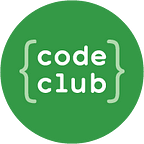Space Junk — A Moonhack 2023 project
Space junk, also called orbital debris, refers to objects in space both natural and artificial. There are more than 34 000 pieces of space junk that are tracked by the Department of Defense’s Space Surveillance Network. They track the pieces that are large enough to threaten our satellites and space missions, while there are a lot of untracked smaller bits that also pose risk to space missions and spacecraft with an estimated 128 million pieces between 1mm and 10cm in size.
Natural meteoroids orbit the Sun, whereas artificial or man-made debris orbits the Earth. These pieces of debris travel at over 28 000km per hour posing great risks in space. It can refer to large objects such as satellites that no longer work and are stuck in orbit, or it can be smaller items such as flecks of paint that have fallen off a rocket.
All of these items pose great risk to any of the 2000 active satellites we have in space, the International Space Station, further exploration in space, as well as the risk of these items ‘falling’ to Earth.
Haven’t registered for Moonhack yet? Make sure you register here to be counted.
This year we have introduced a new type of Moonhack project — a design brief. For this project there are no steps to follow to create a completed project design, as we are looking for coders to develop their own coded solution using a platform of their liking.
Our testers for this project came up with some great ideas for their design project. There were some animations that explain Space Junk and show a possible solution using Scratch, there was a Space Junk game similar to Space Invaders where you had to shoot the space junk to save Earth and there was the creation of a webpage using HTML that gave up to date information and statistics about the issues that we face with so much space junk orbiting Earth.
The design brief provides some scaffolding for coder to develop their ideas and then to jump into creating their solution. The scaffolding is not an exhaustive list, but more a guide to see all of the possibilities that could be used. For those coders wanting to use Scratch, there is a starter project link that provides a great deal of sprites and backgrounds that could be used for their project, or they could start from scratch (pun intended!)
Our testers at Montello Code Club had some great insight into the design brief explanations and how to make it more obvious that you could use any coding platform, not just Scratch. They came up with some awesome designs of projects, and they have been asked to return in November as part of the judging panel, to help decide a winning project.
This year our winning project for Space Junk will get a very unique prize! They will have their project turned into a Code Club project that can then be shared with kids around the world! Space Junk is our one project this year that we will open to entries from across the globe.
Further Resources
If you are looking to learn more information about Space Junk/Orbital Debris then check out
What Is Space Junk and Why is it a Problem? by the National History Museum
Space Debris and Human Spacecraft by NASA
Space Junk is a huge problem — and it’s only getting bigger by National Geographic
Moonhack takes place from October 10th to 26th in 2023. Make sure you register to be counted in this year’s numbers!
Kaye
Moonhack Mission Control
